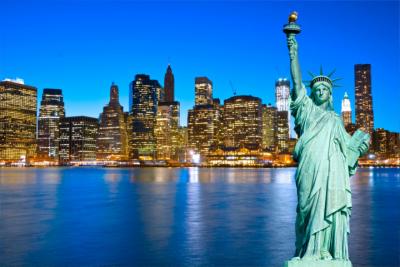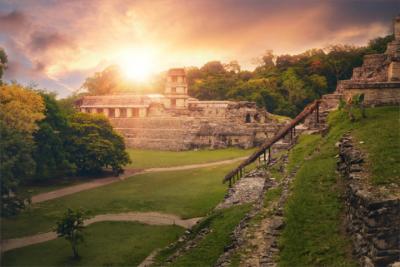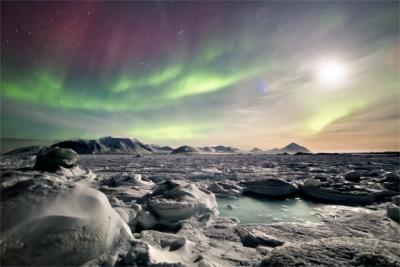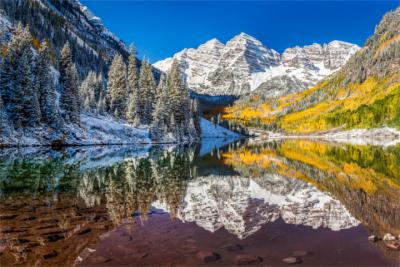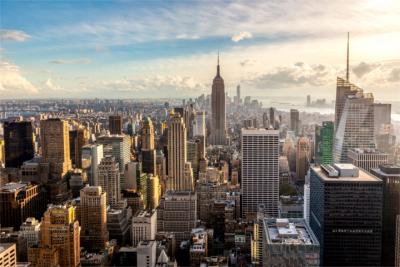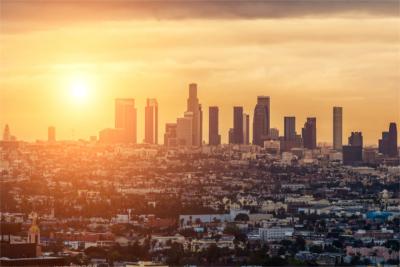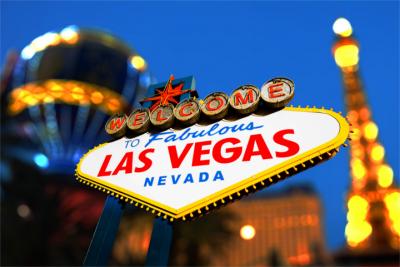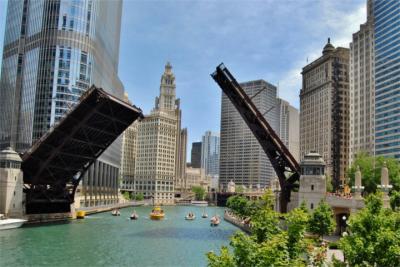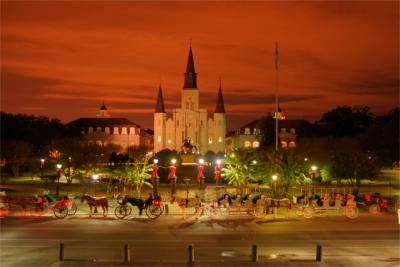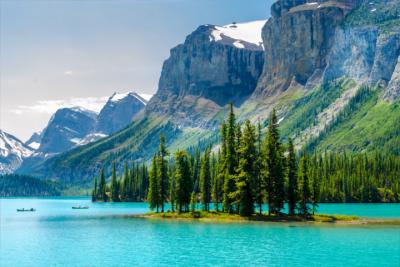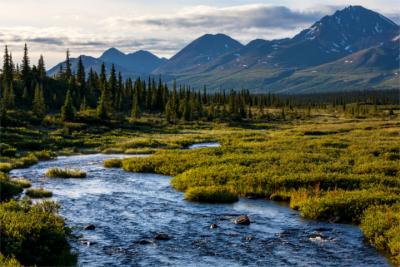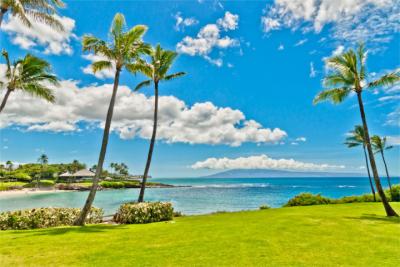Travel Offers
Travelmyne Featureprint
Distance
Mexico - In the Realm of the Maya and Aztecs
Bewitched temple complexes glisten under the rising sun, the gigantic jungle penetrates the age-old walls and keeps the secret of bygone advanced civilisations. Their traditions and customs are still present in the Mexican lifestyle and the local cuisine. In addition, wonderful beaches and the azure blue sea make Mexico the ideal travel destination.

Geography - The fifth biggest country of the American continents
Present-day Mexico comprises 31 federal states as well as one main district and borders on the Pacific Ocean in the south-west. Its neighbouring countries are the USA in the north as well as Belize and Guatemala in the south. Strictly speaking, only 88 percent of the country lie on the North American half, the rest belongs to the Central American land bridge. With regard to size in area, Mexico ranks fifth on the American continents. Besides the Pacific Ocean, you can also reach the Caribbean Sea and the Gulf of Mexico from Mexico. The country's highest point is the volcanic peak Pico de Orizaba (Citlaltépetl), which is over 5,600 metres high and part of the Sierra Nevada - the Trans-Mexican Volcanic Belt. The climate in Mexico is very varied and ranges from subtropical temperatures in the south-east to alpine climate in the mountainous regions to hot desert climate.
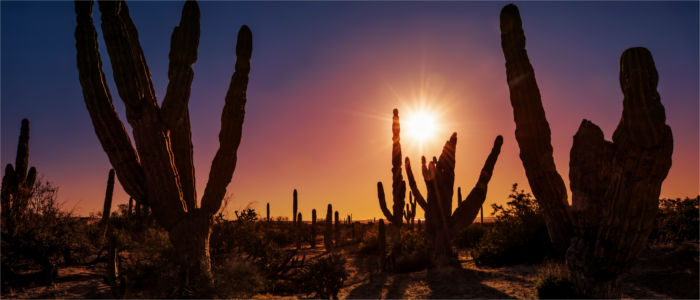
Nature - An abundant flora and fauna
Gigantic plateaus take up a major part of the country. You find steep layers of rock from the Jurassic and Cretaceous period in the east, which are called Sierra Madre Oriental. In the west, on the other hand, volcanic plains from the Tertiary protrude into the sky. The Sierra Madre Occidental is characterised by a vast volcanic landscape. While the craters of the Iztaccihuatl and the Nevado de Toluca have been silent for centuries, the Popocatépetl spits and rumbles from time to time and demonstrates the forces of nature. Travellers who have seen this spectacle understand why bygone advanced civilisations like the Maya or the Aztec people worshipped the native volcanoes like gods. The so-called "biodiversity hotspots" list the twelve most biodiverse countries on earth, Mexico being one of them. Over 200,000 different species populate this natural environment and constitute over ten percent of the world's types of plants and animals. Lovers of nature who think they have already seen everything are put right here. Unknown plants and animals are being discovered here to the present day.

Natural sights - Cenote Ik Kil, Acapulco and Copper Canyon
There are numerous natural highlights beside the obligatory national and nature parks. The Cenote Ik Kil near the Maya site Chichen Itza looks like a natural cathedral in the middle of the jungle. The light shines on a glittery blue underground lake through a gigantic hole in the ceiling. Passing old stone stairs, visitors enter a magical realm and can even take a bath in this unique setting. Mexico's beaches are also recommendable. With over 550 kilometres of length, they offer a fitting spot for every holidaymaker who wants to sunbathe and swim. Fine sandy beach at the Pacific Ocean, numerous beach bars and the prospect of spotting of turtles, dolphins and whales in their natural living environment make this beach holiday a special experience. Furthermore, Mexico offers extraordinary hotspots for relaxing and taking a cure. The unbelievably beautiful Acapulco and the recreational area Baja California on the western tongue of land with diverse oases and deserts show another Mexiccan facet. A visit to the Copper Canyon (Barranca del Cobre) in Chihuahua rounds off a journey through Mexico.

Culture - The rise and fall of advanced civilisations
The first settlements were already founded 20,000 years ago. One of the oldest settlements is Tlapacoya. Several advanced civilisations first practised agriculture in Mexico. The Aztecs had supremacy of the country until the 16th century, but the Maya people, Olmecs and Toltecs were also widely spread. They built countless temple complexes and settlement areas and even the first roads in the midst of the jungle. The power of advanced civilisations ended abruptly in 1517 when the Spanish arrived by ship. Driven by their search for gold, they advanced into the heartland. The name Cortés needs to be mentioned in this context. The era of the pre-Columbian advanced civilisations drew to a close and the territory of Mexico was declared Viceroyalty of New Spain. Mexico only became a presidential Republic in 1917 and looks back on a turbulent past. The most important cities and metropolises Mexico City, Puebla and Toluca are located in the secure valley between the volcanoes. About 30 percent of the present-day population still derive from indigenous ethnic groups like the Maya people, the Nahuas and the Aztecs. Typical colonial architecture was preserved in many parts of the country. Mexico's turbulent history matches the temperament of the open and fun-loving Mexicans. The inhabitants of Mexico, like those of Spain, have a siesta. The hours around noon to the early afternoon are considered a period of rest.

Cultural sights - From Chichen Itza to Mérida
Pre-Columbian art and culture is characteristic of Mexico. The traces of the Maya and Aztecs are ever-present. About an hour away from the capital you find one of the most important Aztec centres: the Pyramids of Teotihuacan with the impressive Pyramid of the Sun and Pyramid of the Moon. The mysterious Maya site Chichen Itza is typical of Mexico and one of the new seven wonders of the world for a reason. Another highlight, which is a must on anyone's journey through Mexico, are the ruins of the city Palenque in the middle of the tropical rainforest. The world-famous ruin Tulum looks particularly scenic on the white sandy beach in front of the Caribbean Sea. From the advanced civilisations you get into the centre of colonial times. The cultural capital Mérida lies on the Yucatán Peninsula and was traditionally built in colonial style. The Church of Santo Domingo and the Cultural Centre in Oaxaca are very popular with visitors.
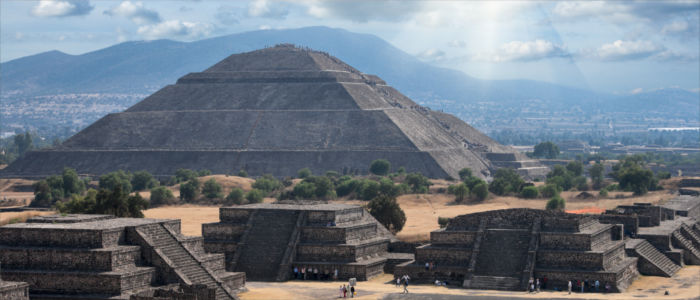
Experience - Spicy chillies, romantic haciendas and hidden tunnels
It is an international success, particularly spicy and literally on everyone's lips: the Mexican cuisine. The influences of the Maya and Aztec people are still present and spicy chillies as well as highly seasoned beef are the basic ingredients for every dish. Lunch is the most important meal of the day. You find delicious tacos, tortillas, enchiladas and jalapeños on every Mexican menu. The country's national dish is called mole poblano and consists of juicy turkey meat with a chilli sauce and a hint of chocolate. To it, you have the typical drink horchata, which is made from rice and cinnamon. People have tequila or mezcal in the evening hours. Mexico's capital Mexico City is one of the greatest metropolises on earth. Travellers who choose this location for a city trip should treat themselves to a gondola ride on the canals of Xochimilco. The haciendas in the heartland or at the seaside are even more romantic. Traditional country estates invite visitors to pause and dream. The resort Puerto Vallarta is a mecca for connoisseurs, active holidaymakers and shopping fans. Especially the young and the young at heart get their money's worth here. The city Guanajuato is famous for its many bars and pubs but it is part of the UNESCO World Cultural Heritage for a different reason: you find old tunnel systems in the city's underground, which were once used as the most important arterial roads.

Activities - From the Isla Espíritu Santo to Guadalajara
Swimming in the cenotes in the middle of the jungle, horseback riding in the Sierra Madre, fishing in the Caribbean Sea or the Pacific Ocean and hiking or biking on the hills of the Sierra Norte - Mexico caters for all tastes. Its breathtaking underwater world attracts thousands of divers and snorkellers to the Isla Espíritu Santo every year. The scenic coastal towns on the Yucatán Peninsula offer fun at the beach and in the sea. Tulum is one example. Its bays are also excellently suited for kayak tours. You find a downright surfing mecca at Puerto Escondido and those who still have power and stamina after a day at the beach can dive into the excessive nightlife of Mexico's second biggest city. The bars, clubs and discos in Guadalajara put visitors into a party mood and are especially popular with young travellers.
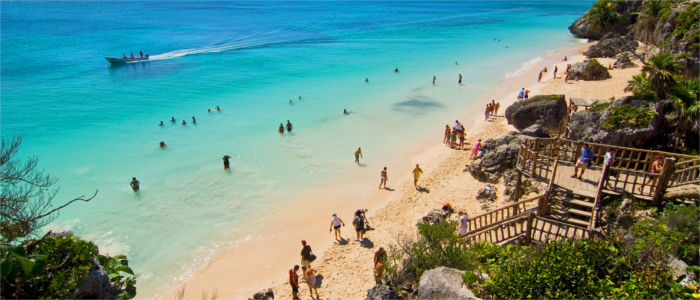
Information
Spanish has been the country's unofficial language since 2003 and is very common. Thanks to the dense air traffic network, travellers can easily arrive by plane. The most important international airport Benito Juárez is located in front of the gates of Mexico City. The best means of transport within the country are the comfortable and air-conditioned intercity coaches. In addition, Mexico has over 67 seaports, so you can also go on a cruise.
Mexico can be regarded as another country of unlimited opportunities. The rich cultural heritage of old advanced civilisations, the convenient location at the Pacific Ocean and the Caribbean Sea as well as the proximity to Latin America and the USA make the country an appealing destination for travellers of all age groups. Lovers of culture, active holidaymakers and people who enjoy entertainment are in good hands in Mexico.

